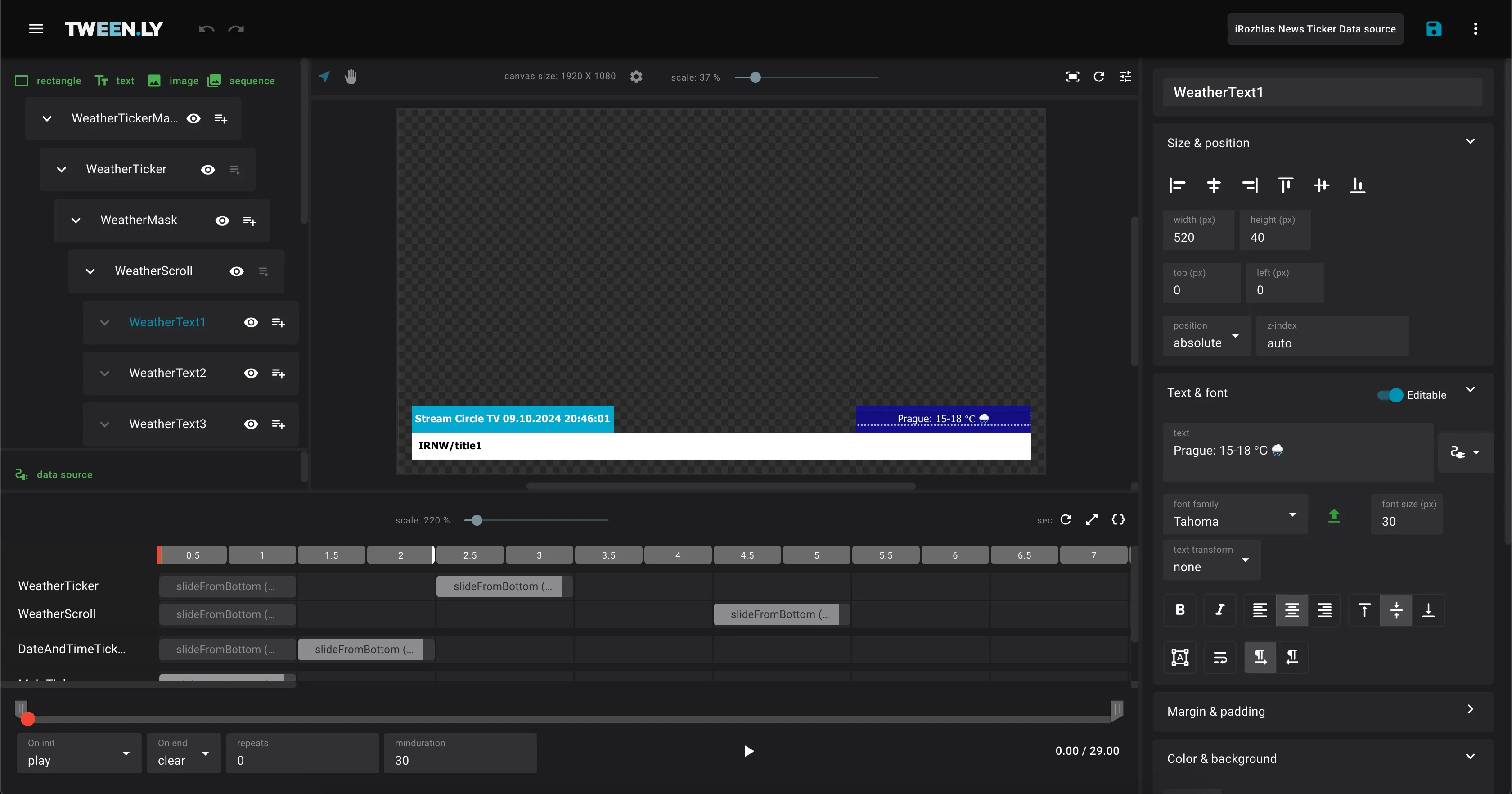Editor Overview
The Editor is the core of Tweenly, where you create, edit, and animate broadcast graphics. This page provides an overview of the interface, layout, and essential tools used to design and manage graphic files.
Editor Layout
The Editor consists of five key sections:
- Top Bar – File actions, main menu, and project settings.
- Left Sidebar – Tools for adding objects and managing object hierarchy.
- Canvas – The main workspace for arranging and animating objects.
- Right Sidebar – Controls for object properties and animations.
- Bottom Panel (Timeline) – Manages animation timing and playback.

1. Top Bar (File Management)
The Top Bar provides quick access to essential file actions.
- Main Menu – Navigation for Gallery, Profile, and project creation.
- File Actions:
- Save – Manually save your work.
- More – Access New, Duplicate, Export and Clear actions.
2. Left Sidebar (Object Management)
The Left Sidebar allows you to add objects and manage their hierarchy.
Adding Objects
Tweenly supports three primary object types:
- Rectangle – For backgrounds, masks, or layout elements.
- Text – Supports both system and uploaded fonts.
- Image – Accepts
png, jpg, bmp, gifformats. - Image sequences
- Crawl ticker
- Scroll ticker
Object Tree
- Objects reordered (move up, down, to the root), or nested (e.g., text inside a rectangle).
- Right-click an object to duplicate, delete, or create child objects.
- Nesting is limited:
- ✅ Rectangles & Images: Can contain child objects.
- ❌ Text, Image sequences and Tickers: Cannot have children.
3. Canvas (Main Workspace)
The Canvas is where you visually arrange and modify graphics.
- Zoom & Pan: Adjust your view to focus on specific areas.
- Manipulate Objects: Move, resize, and rotate objects.
- Selection & Grouping: Select multiple objects for bulk actions.
4. Right Sidebar (Object Properties & Animations)
The Right Sidebar provides tools for modifying objects and animations.
Object Properties
Each object in the scene has configurable properties, including:
- Position: X/Y coordinates.
- Size: Width and height.
- Color: For rectangles and text.
- Borders and Gradients: For rectangles.
- Overflow: Manage text overflow or masking.
Animations
The Animations tab lets you add and customize animations for the selected object. Adjust animation types, duration, and easing (e.g., fade, move, scale).
5. Bottom Panel (Timeline & Animation Control)
The Timeline controls animation playback and timing.
- Keyframes – Define specific points in time when an object changes (e.g., moves or fades).
- Playhead – Drag the playhead to preview different points in the timeline.
- Duration & Timing – Adjust the start time, end time, and duration of animations by dragging objects on the timeline.
Animation Controls
- Add Keyframes – Click the Add Keyframe button.
- Playback Controls – Play, pause, and review animations.